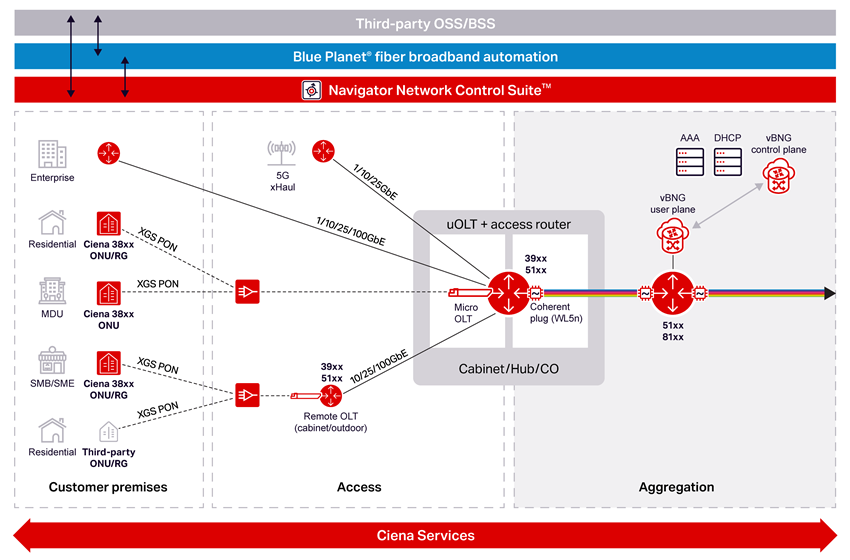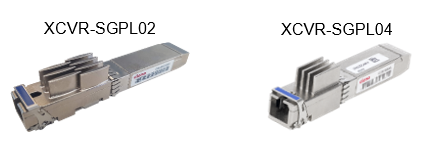Operators are facing a critical decision when it comes to deploying their broadband access networks. Ciena's Joe Marsella explains how you can get on a better path to unlocking the value of your fiber and ensuring long-term success in an evolving digital landscape.
Today, operators find themselves at a crossroads, a critical decision point regarding the build-out of their broadband access networks. This decision could impact the direction of their business over the three-decade lifespan of their fiber. Selecting a technology partner to go on a 30-year journey is no easy task.
Why? Because this is more than just an investment decision. It’s about selecting a partner that is able to provide the needed flexibility so that you can scale to meet increasing demand, decrease churn, and hit sustainability objectives. Operators need to rethink deployment models not only in the context of today’s essential broadband access needs but also with an eye on the lasting impact on their business objectives and customer experience.
While different operators and verticals face unique challenges, a common thread runs through them all: how to best serve their customers while securing their financial and operational success. This means establishing, maintaining, or growing their subscriber base while generating new service revenues and improving efficiency in capital and operational expenses.
So how does this common thread relate to key decisions operators face as they consider deployment alternatives in their broadband access networks? It all begins with the business challenges.
Understanding the business challenges
What are the issues driving this need to consider new deployment models and options? Let’s examine them.
Lack of Flexibility
The first challenge is an inherent lack of flexibility in broadband deployment models. Today’s traditional chassis-based or pizza box solutions generally serve a singular purpose – that of an OLT. This means that only a single shared service type can be delivered from this platform and that a separate router is generally required to connect these subscribers to the rest of the network.
Inability to incrementally scale
Traditional architectures also lack the ability to scale incrementally. The size and fixed port count of traditional OLTs mean operators are forced to overbuild and spend more on deployment than required instead of scaling as demand grows.
Traditional BNGs have a similar problem in that fixed chassis sizes dictate a more centralized BNG deployment model, resulting in the need to pull traffic deeper back into the network when, in fact, applications are moving to the edge. These legacy architectures fail to scale effectively to handle the growth and dynamics of modern-day traffic patterns that access networks are required to support.
Building a sustainable access network
More than ever, conversations with operators turn to sustainability. The problem is that the power, cooling, and real estate costs for access networks continue to increase, consuming more OpEx. Traditional access networks are built with single-purpose power-hungry equipment that take up a less than optimal amount of space. All of this is in direct opposition to operators’ sustainability goals.
With fiber often having lifetimes of 30+ years, operators are rightfully viewing their access network as a long-term strategic asset. They want to unlock the value of that fiber for new service opportunities and, at the same time, reduce costs to improve profitability, reach their sustainability objectives, and improve customer satisfaction.
But traditional broadband access architectures don’t address these challenges to the degree necessary for operators to meet their goals.
A path to better broadband
Ciena’s broadband solution gives operators unprecedented flexibility to build their access networks for today, with the scale needed to evolve their networks into the future. Our solution leverages ground-breaking innovations in PON pluggables, purpose-built routers, virtual subscriber management and leading network control software as well as operational support system (OSS) automation software. Broadband networks are becoming increasingly challenging for operators to plan, deploy, and operate in an agile manner. The Navigator Network Control SuiteTM and the Blue Planet Fiber Broadband Automation solutions provide the tools and intelligence needed for planning, software control and automation of multi-layer and multi-domain networks throughout the entire operational lifecycle. Ciena Services delivers a suite of end-to-end professional services, tailored to help operators successfully deploy broadband Ciena’s broadband solution provides a new way for operators to serve more customers in more locations, scale cost effectively as demand requires and achieve greater sustainability with the smallest-footprint, lowest-power technology.
Figure 1: Ciena’s Broadband Access Solution
Deployment Flexibility
The path to a more flexible broadband network begins with Ciena’s micro-OLT (uOLT), the industry’s first, and only, fully functional OLT in a small form factor pluggable (with embedded Ethernet-to-PON OLT MAC bridge). The uOLT turns standard Ethernet ports in a host switch or router into a fully functional OLT on a port-by-port basis (no dedicated OLT platform required) while other ports can be used for other active services (Ethernet, IP, TDM, OLT etc.). (see figure 1)
Ciena’s pluggable micro-OLT (uOLT)
This capability brings unmatched flexibility to PON deployments, with the ability to deploy in a central office, street cabinet, or an outdoor site such as a strand or a pole. This means operators of all kinds can leverage existing infrastructure and cost-effectively deploy XGS-PON surgically, exactly where it is needed and at the scale required.
Ciena’s broadband solution features a comprehensive portfolio of host routers and switches, including outdoor weatherized options. This enables PON to be deployed anywhere in the access network, including remote rural locations.
Freed from the constraints of traditional OLT sizing requirements which are often determined by a singularly focused chassis or pizza box form factor, PON can now be deployed where needed, when needed, and in the increment needed to maximize revenue and broadband penetration.
Incremental scaling in lockstep with demand
Ciena’s solution tackles the issue of scaling head-on. Granular scaling begins in increments as small as one port/one uOLT and scales up by adding uOLTs into available ports matched to traffic demand, enabling true pay-as-you-grow economics.
Likewise, legacy (chassis-based) BNGs, with their historically closed architectures, make it difficult to address rapidly changing demands for scalability and flexibility. Ciena’s virtual broadband network gateway (vBNG) is an open architecture and separates the control plane from the user plane, allowing user planes to be sized and placed in the network where needed and then scaled flexibly to meet traffic demand.
Scaling also includes the ability to easily deploy higher-speed PON, including 25GS-PON and beyond, as demand grows. The key to the uOLT and higher-speed PON is ASIC development. Ciena owns, develops, and controls the ASIC technology, which is an industry-first innovation that enables a fully functional OLT to be put on a chip. Combining this with Ciena’s leadership in coherent optical provides operators with unmatched flexibility and an accelerated path to future innovation, which is important when considering fiber can be a 30+-year investment.
Building a sustainable access network
Finally, operators are able to accelerate their sustainability goals and reduce environmental impacts with Ciena. Given no fixed chassis is required, pluggable uOLTs can be deployed in a router (one port at a time) and only use power, cooling, and space when needed. Since any router/switch ports can be used for all services (Ethernet, IP, TDM, OLT, etc.), there is efficient use of power, cooling, and space spread across multiple services. Fewer boxes mean a smaller footprint.
An industry at the intersection of investment and innovation
Indeed, some decisions are more important than others, and this is one of those times. The industry is at a unique intersection of 30-year investment and innovation. The investment in fiber access networks brings the promise of digital inclusion to the underserved and unserved while advancing the network for those fortunate enough to have broadband today. Innovations like Ciena’s uOLT and vBNG, combined with a robust family of purpose-built routers, managed by our Navigator Network Control Suite and Blue Planet automation suite, are redefining broadband access flexibility, scalability, and sustainability – giving operators a path to better broadband.
Choosing the right path to broadband is essential for operators to meet their business objectives, serve their customers more effectively, and achieve long-term success. With Ciena's broadband solution, operators can navigate this intersection with confidence and unlock the full potential of their broadband access networks.








